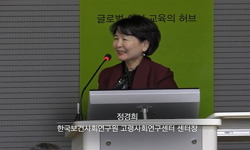With its territorial expansion and population growth, the Qing dynasty was a remarkable era of the Chinese history for both its economic development and ethnic diversity. Mongols and Tibetans inhabiting northwestern and western parts of the Qing empir...
http://chineseinput.net/에서 pinyin(병음)방식으로 중국어를 변환할 수 있습니다.
변환된 중국어를 복사하여 사용하시면 됩니다.
- 中文 을 입력하시려면 zhongwen을 입력하시고 space를누르시면됩니다.
- 北京 을 입력하시려면 beijing을 입력하시고 space를 누르시면 됩니다.

喇嘛, 僧伽, 그리고 淸 帝國 ― 淸代 티베트 사원의 승려인구 변화와 淸의 對 티베트 정책 ― = Lama, Sangha, and the Qing Empire — The changes of monastic populations in Qing times and Qing policies towards Tibet —
한글로보기https://www.riss.kr/link?id=A108917663
-
저자
김한웅 (고려대학교)
- 발행기관
- 학술지명
- 권호사항
-
발행연도
2023
-
작성언어
Korean
-
주제어
淸朝 ; 티베트 불교 ; 인구 ; 轉生라마 ; 승려 ; 理藩院 ; Qing dynasty ; Tibetan Buddhism ; population ; reincarnate lama ; sangha ; Lifanyuan ; 淸朝 ; 藏傳佛教 ; 人口 ; 轉生喇嘛 ; 僧伽 ; 理藩院
-
등재정보
KCI우수등재
-
자료형태
학술저널
- 발행기관 URL
-
수록면
393-420(28쪽)
- 제공처
-
0
상세조회 -
0
다운로드
부가정보
다국어 초록 (Multilingual Abstract)
With its territorial expansion and population growth, the Qing dynasty was a remarkable era of the Chinese history for both its economic development and ethnic diversity. Mongols and Tibetans inhabiting northwestern and western parts of the Qing empire were a key to such a development, and Tibetan Buddhism, as a major religious and cultural underpinning for the people, became a matter of interest for the Qing dynasty. Accordingly, the Qing adminstration had devised an institutional apparatus, such as Lifanyuan (Board for the Administration of Outlying Regions), for their control. This paper analyzes a gap between the theoretical and assigned numbers of Tibetan monastics and their actual and bona fide existence in the Tibetan Buddhist world in order to understand the ways in which the Qing dynasty addressed the matters related to Tibetan Buddhism.
The religious population of Tibetan Buddhism comprised two major parts: reincarnate lamas (Tib. sprul sku) and sangha communities. According to the regulation of Lifanyuan, there was a designated quota of the reincarnate lamas during the Qing times. However, the quota does not match with the huge growth of numbers of reincarnate lamas, which can be verified by recent studies by scholars such as Gray Tuttle. This clearly tells the fact that the Qing dynasty did not have a control of the spread of the phenomenon of reincarnate lamas. The more general religious population of Tibetan Buddhism, the sangha communities, shows a similar pattern. The Qing times saw an exponential growth of monk populations of Tibetan Buddhism, which exceeded the growth speed of the general population of Qing. Nevertheless, the Qing administration developed a very limited institutional measures to deal with the phenomenon. It was obvious, however, that the Qing court had been well aware of these two populational developments.
In sum, it can be argued that Qing did not have ability nor intention of controling the population of Tibetan monatics such as reincarnate lamas and sangha communities. The Tibetan Buddhism world had its own initiatives and dynamics for its development during the Qing times.
동일학술지(권/호) 다른 논문
-
- 동양사학회
- 남민구
- 2023
- KCI우수등재
-
- 동양사학회
- 김종섭
- 2023
- KCI우수등재
-
6세기 지역사회 유력자의 義邑 造像事業 참여 목적과 역할
- 동양사학회
- 정재균
- 2023
- KCI우수등재
-
- 동양사학회
- 이평수
- 2023
- KCI우수등재




 DBpia
DBpia






